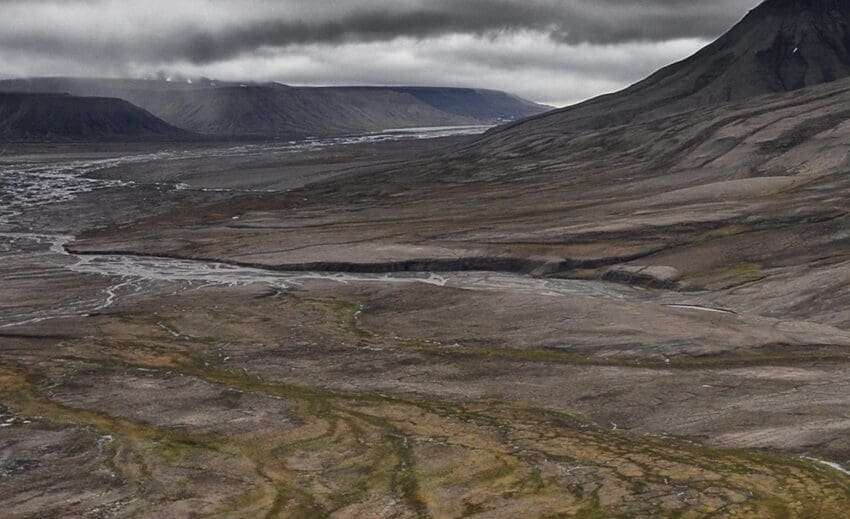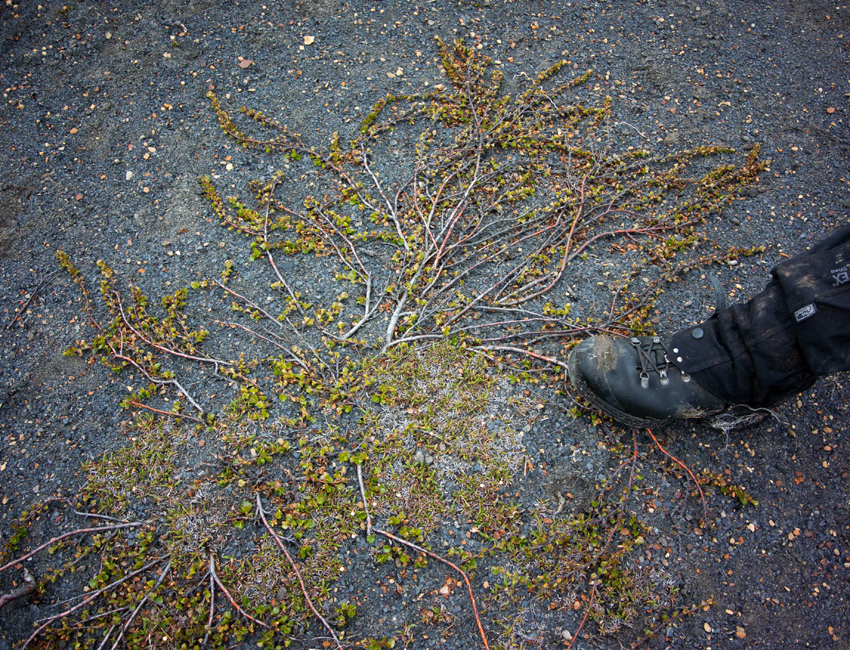Effects of sea ice on Arctic shrub growth: The importance of biotic interactions

Sparsely vegetated Arctic tundra in Adventdalen in autumn. Photo: Mads Forchhammer/UNIS.
Top image: The sparsely vegetated Arctic tundra in Adventdalen in autumn. Photo: Mads Forchhammer/UNIS.
Across the Arctic tundra increased plant productivity has been associated with the accelerating retreat of the Arctic sea ice, due to warmer climate. However, emerging studies document opposite effects, showing a more complex relationship between the shrinking sea ice and terrestrial plant growth.
22 September 2017
Press release from the University Centre in Svalbard (UNIS)
UNIS professor Mads Forchhammer has recently published a study in Royal Society Biology Letters, where he introduces a plant growth model, which integrates effects of both biological and climatic conditions for analysing individual plant growth time series of annual tree-ring width measurements.
Based upon 128 individual plants of Arctic willow (Salix arctica, S. glauca) as well as the birch (Betula nana) sampled across Greenland to Svalbard, an overall negative effect of the retreating June sea ice extent was found on the annual growth. In particular, young fast-growing plants were affected. Also, his results suggested that effects mediated by the retreating sea ice were stunted by increased constraints on growth between years. In other words, variations in the biology of the plants, variations in their life history, may be an important factor determining how much changes in climate influence individual plants.
Decreased access to water
Although variable from locations in Greenland to central Svalbard, the analyses by Mads Forchhammer pointed to an overall decline in annual growth to the retreating sea ice. Why is it so? As the sea ice retreats, the summer temperature and the depth at which permafrost is found increases. In the Arctic with an atmosphere characterized by low humidity, such conditions may stress the plants growth as the access to water may become more difficult. Hence, the warming of the Arctic tundra following the retreat of the sea ice may also pose problems for plant species living here, adapted to a previously colder environment.
Reference:
Mads Forchhammer: Sea-ice induced growth decline in Arctic shrubs. Biol. Lett. 2017 13 20170122; DOI: 10.1098/rsbl.2017.0122. https://rsbl.royalsocietypublishing.org/content/13/8/20170122
